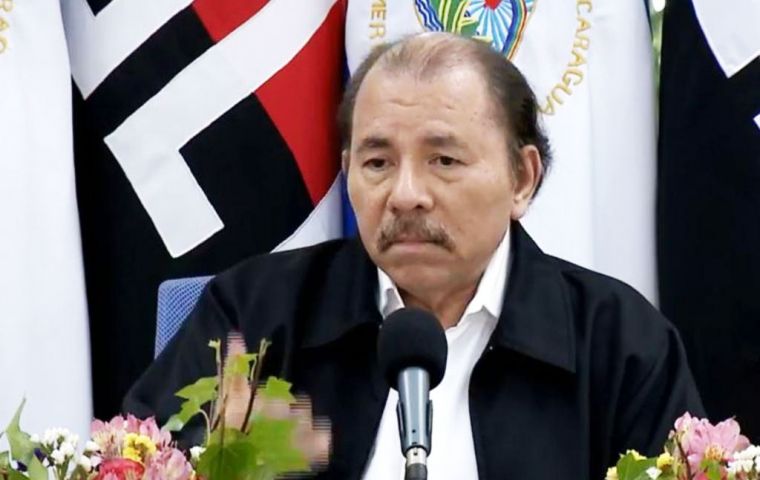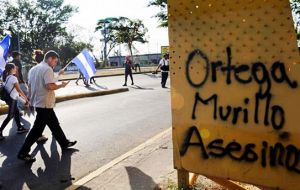MercoPress. South Atlantic News Agency
The Washington Post: The political rot in Nicaragua
 By the thousands, Nicaraguans have taken to the streets in protest, and Ortega has responded with demonizing propaganda, media censorship and police gunfire.
By the thousands, Nicaraguans have taken to the streets in protest, and Ortega has responded with demonizing propaganda, media censorship and police gunfire.  Some several dozen people, including students, journalists and police, have been killed, according to human rights monitors.
Some several dozen people, including students, journalists and police, have been killed, according to human rights monitors. Nicaragua is a volcanic nation, geologically and politically. Forty years ago, seemingly out of nowhere, a series of popular eruptions shook the entrenched regime of Anastasio Somoza, who fell from power on 19 July, 1979. Today, one of the revolutionary architects of that dictator’s ouster, Sandinista party chief Daniel Ortega, rules the country of 6.1 million as high-handedly and corruptly as Somoza ever did.
In recent days, Ortega has found that his dynasty, too, rests on an unstable foundation. By the thousands, Nicaraguans have taken to the streets in protest, and Ortega has responded with demonizing propaganda, media censorship and police gunfire. Some several dozen people, including students, journalists and police, have been killed, according to human rights monitors.
The proximate cause of this bloodbath was Ortega’s decision to shore up the finances of the Nicaragua social security system, through a combination of benefit cuts and higher taxes on both workers and employers. With losses in that system mounting, reform was indeed necessary, as the International Monetary Fund and other international analysts have noted. The Nicaraguan people are well aware of the system’s challenges, some of which, such as demographic changes, are not Ortega’s fault, while others, such as a lack of transparency, wasteful investments and bloated administration, are. Ortega’s characteristically peremptory manner of imposing the changes, with no acknowledgment of his regime’s mismanagement, maximized popular outrage.
By now, however, the protests have taken on a life of their own and reflect frustrations much wider than the social security cutbacks, which Ortega withdrew in a belated effort at appeasement. Thousands of middle-class demonstrators clogged Managua’s streets demanding genuine democracy instead of the managed and manipulated kind that Ortega, with the connivance of opportunistic politicians and business leaders, has created. In power since 2007, Ortega and his wife, Rosario Murillo, who is vice president, control the judiciary, parliament, armed forces and police through a combination of graft and strategically administered force.
Like their forebears who abided the Somoza dynasty, Nicaraguans have grinned and borne the Ortega-Murillo dynasty’s many abuses in part because they were powerless to do otherwise, and in part because the regime has at least kept the peace: Nicaragua has avoided the gang violence that has torn apart Central American neighbors Honduras and El Salvador. Order and a growing economy are this regime’s justifications for denying liberty, just as they were for Somoza.
The events of the past week have reminded Nicaraguans of the political rot underlying their apparent domestic tranquility. Economic growth, too, is fragile, given Nicaragua’s dependence on the largesse of Venezuela, its ideological running mate in Latin America. Even if Ortega and Murillo ride out this short-term crisis, their people will not soon forget what they have just experienced. The question is whether the Nicaraguan president and vice president have learned a lesson, too, or whether, like so many other Latin American dictators of the past, they intend to cling to power until it is too late.




Top Comments
Disclaimer & comment rules-

Read all commentsReekie,
Apr 27th, 2018 - 10:14 pm 0where are you ? afraid of defending Ortega ? you shouldn't be, he is one of Lula's friends...
Commenting for this story is now closed.
If you have a Facebook account, become a fan and comment on our Facebook Page!